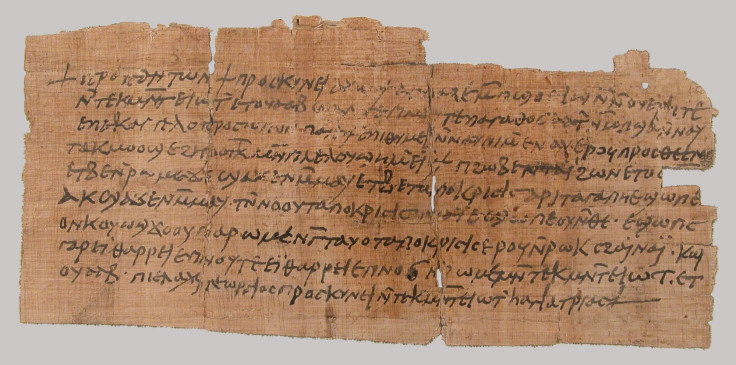Rare First Temple Period Papyrus Found In Montana, Document To Be Preserved In Israel
KEY POINTS
- The papyrus is in Hebrew
- It is believed to have been originally found in the Judean desert caves
- It is one of the three such documents found till date
A rare, priceless first temple period document has been recovered from an unsuspecting man in Montana.
The procured papyrus is of immense importance to archaeologists. The rare papyrus has traveled from Montana to Israel to reach the place where its preservation will be properly seen through, the Judean Desert scroll conservation laboratory in Jerusalem.
The Hebrew document is believed to have been originally found in the Judean desert caves.
The papyrus starts with the words "To Ishmael send...," and is one of the three such documents to have been found to date.
"First Temple-period documents written on organic materials—such as this papyrus—have scarcely survived," said Joe Uziel, Director of Israel Antiquities Authority's Judean Desert scrolls unit, The Jerusalem Post reported. "Whilst we have thousands of scroll fragments dating from the Second Temple period, we have only three documents, including this newly found one, from the First Temple period."
"The name Ishmael mentioned in the document, was a common name in the biblical period, meaning 'God will hear,'" Ben-Gurion University Professor Shmuel Ahituv said.
"It first appears in the Bible as the name of the son of Abraham and Hagar, and it is subsequently the personal name of several individuals in the Bible, including Yishmael ben Netanyahu, who murdered the governor Gedaliah ben Ahikam."
Documented pieces of evidence like these help archaeologists study the literacy and writing prevalent at that time.
"Towards the end of the First Temple period, writing was widespread. This is evident from many finds, including groups of ostraca (documents written on pottery shards) and stamp seals with writing discovered in many ancient urban settlements." Uziel said.
"Each new document sheds further light on the literacy and the administration of the First Temple period," he added.
The man in Montana, who was in possession of the papyrus, said he had inherited it from his mother. The former curator of the Rockefeller Museum, Joseph Sa'ad, and antiquities dealer Halil Iskander Kandu had reportedly given this document to the Montana man's mother on her visit to Jerusalem in 1965.
The Montana resident was convinced about handing over the Dead Sea scroll fragment after he visited the Judean Desert scroll conservation laboratory in Jerusalem, and saw the facilities there which were best suited to preserve such documents.
A joint operation by the Antiquities Theft Prevention Unit of the Israel Antiquities Authority, the Culture and Sport Ministry and the Jerusalem Affairs and Heritage Ministry was conducted to get the papyrus from Montana to Israel safely.
"Returning this document to Israel is part of ongoing efforts undertaken by the Antiquities Theft Prevention Unit of the Israel Antiquities Authority to protect and preserve the cultural heritage of the State of Israel, a heritage that belongs to all its citizens, playing a role in the story of the historical heritage of the country and its inhabitants over the centuries," said Eitan Klein, deputy director of the Israel Antiquities Authority's theft prevention unit.

© Copyright IBTimes 2025. All rights reserved.





















